Abstract
OBJECTIVE: To compare adjusted mortality rates of TEFRA-risk HMO enrollees and disenrollees with rates of beneficiaries enrolled in the Medicare fee-for-service sector (FFS), and to compare the time until death for decedents in these three groups. DATA SOURCE: Data are from the 124 counties with the largest TEFRA-risk HMO enrollment using 1993-1994 Medicare Denominator files for beneficiaries enrolled in the FFS and TEFRA-risk HMO sectors. STUDY DESIGN: A retrospective study that tracks the mortality rates and time until death of a random sample of 1,240,120 Medicare beneficiaries in the FFS sector and 1,526,502 enrollees in HMOs between April 1, 1993 and April 1, 1994. A total of 58,201 beneficiaries switched from an HMO to the FFS sector and were analyzed separately. PRINCIPAL FINDINGS: HMO enrollees have lower relative odds of mortality than a comparable group of FFS beneficiaries. Conversely, HMO disenrollees have higher relative odds of mortality than comparable FFS beneficiaries. Among decedents in the three groups, HMO enrollees lived longer than FFS beneficiaries, who in turn lived longer than HMO disenrollees. CONCLUSIONS: Medicare TEFRA-risk HMO enrollees appear to be, on average, healthier than beneficiaries enrolled in the FFS sector, who appear to be in turn healthier than HMO disenrollees. These health status differences persist, even after controlling for beneficiary demographics and county-level variables that might confound the relationship between mortality and the insurance sector.
Full text
PDF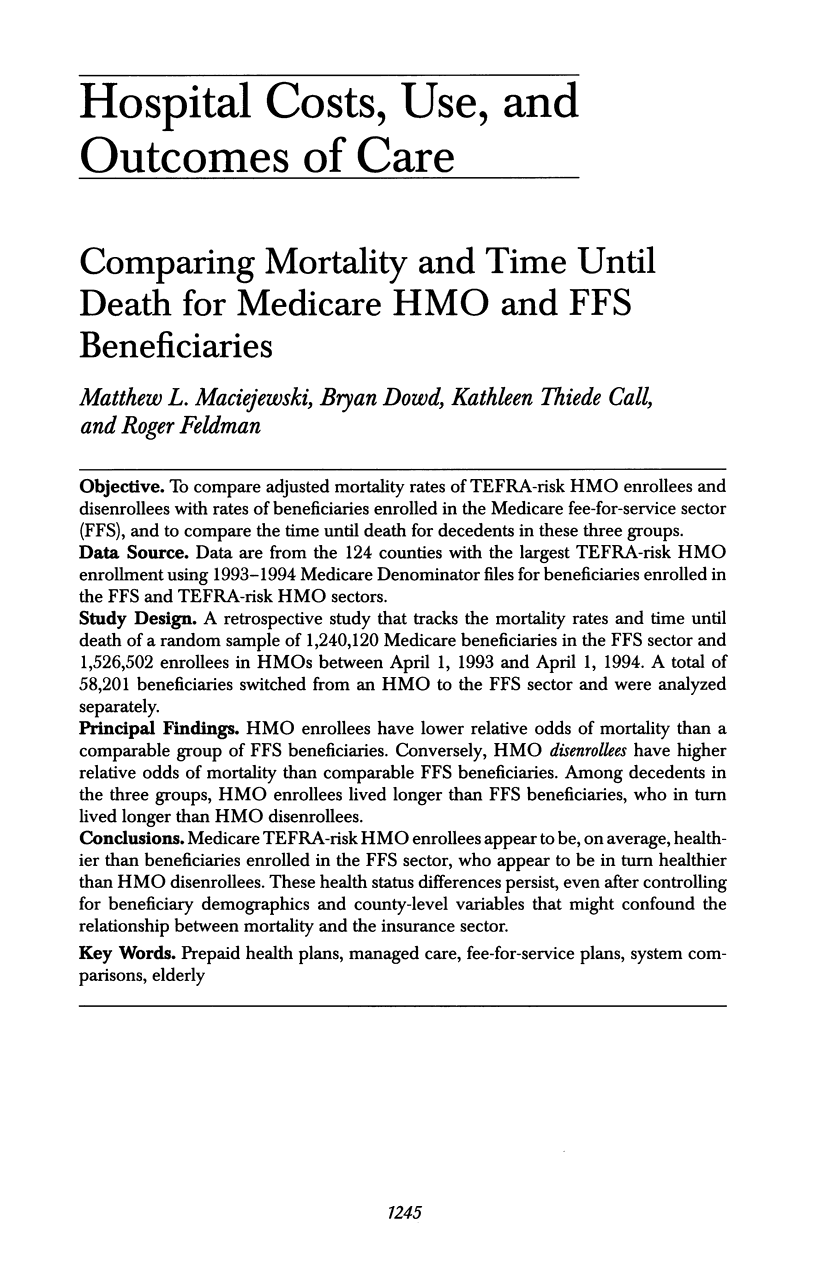
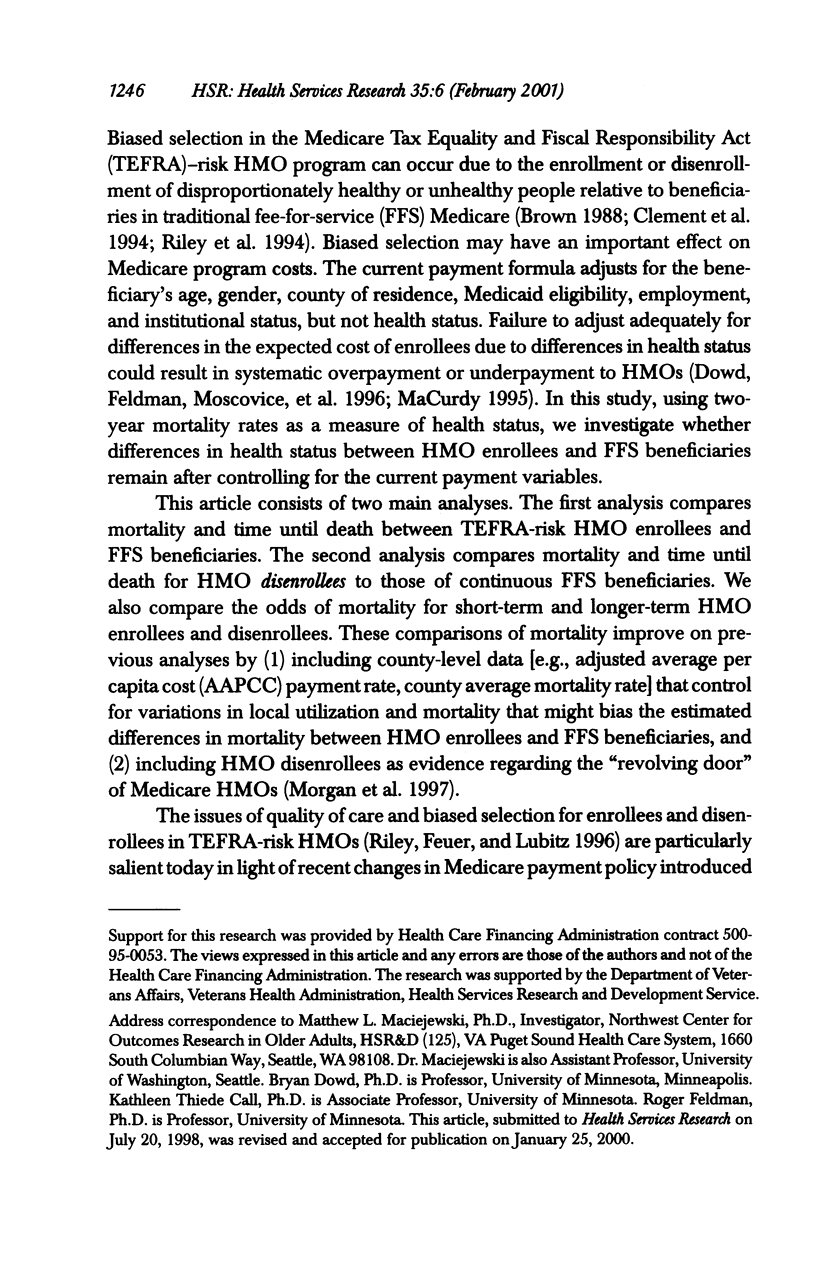

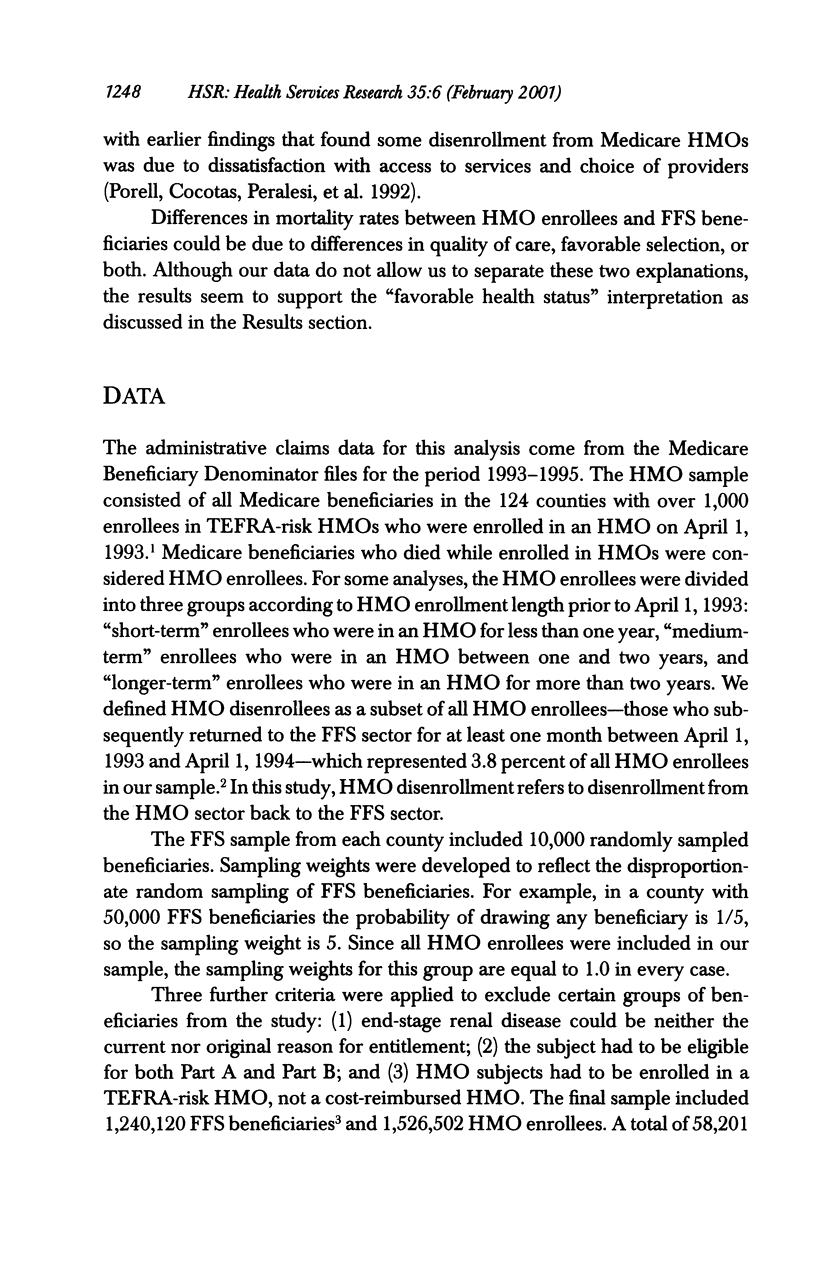
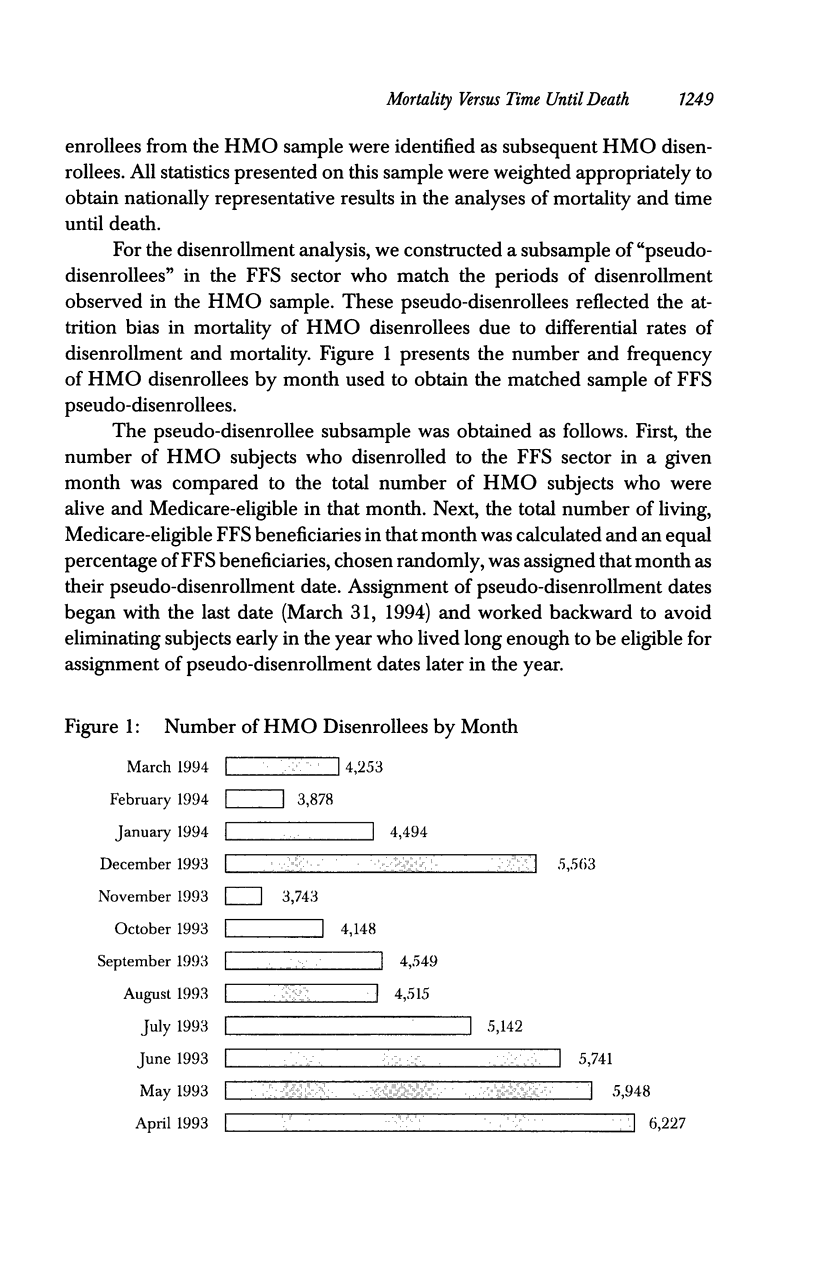


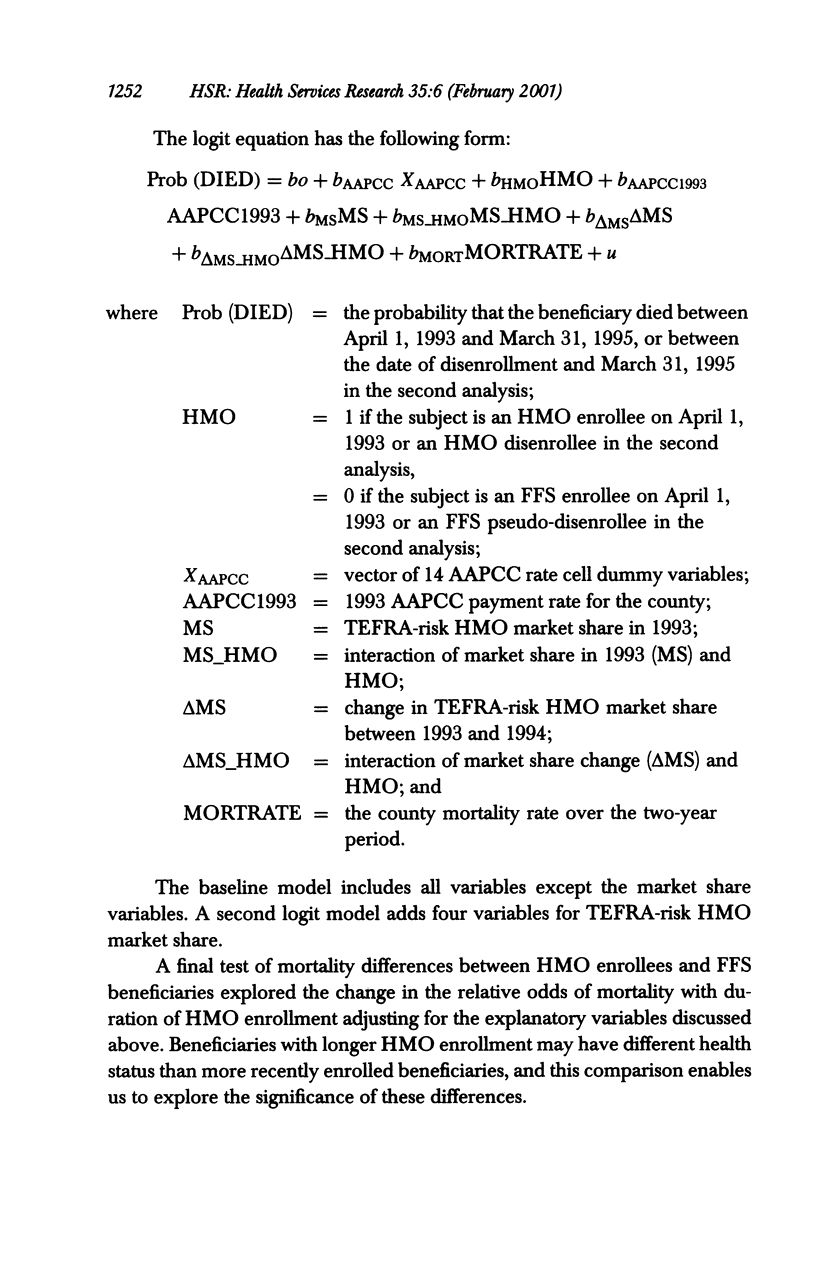
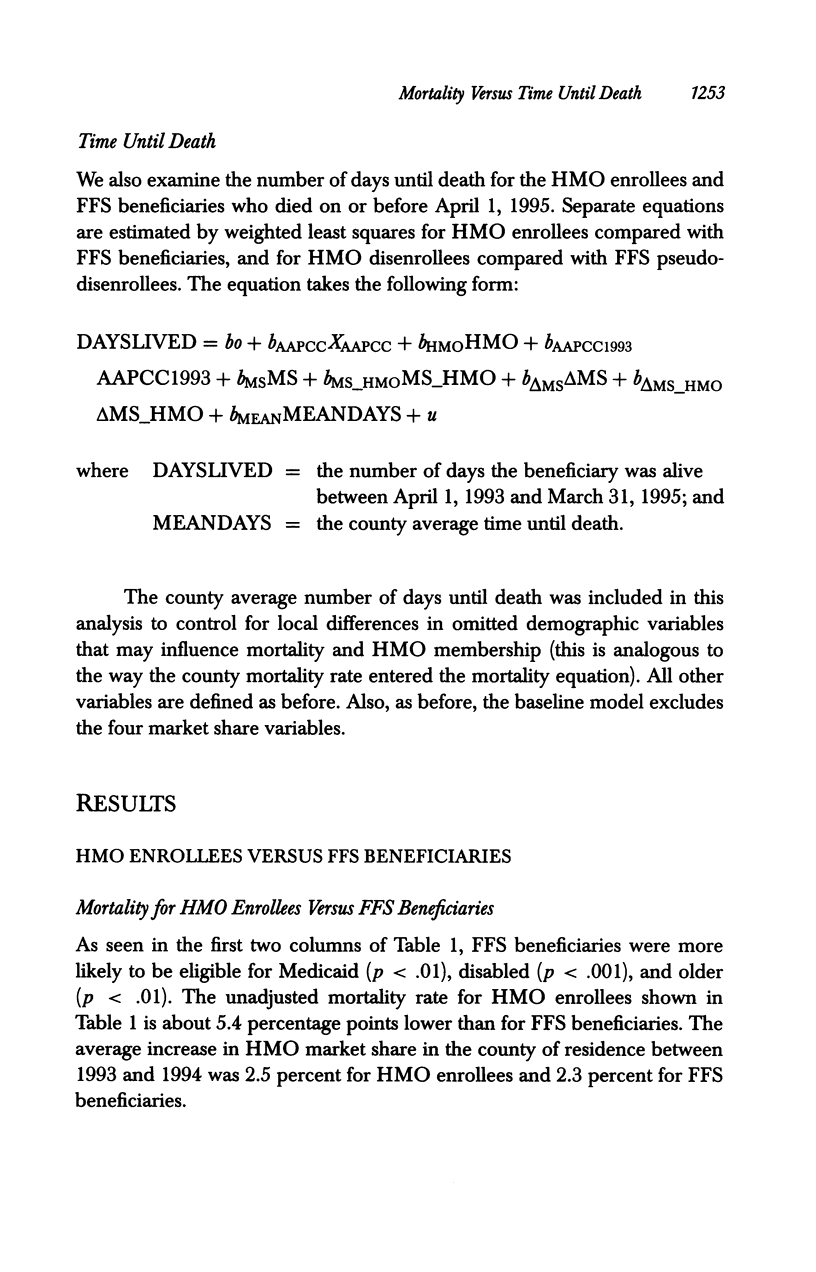
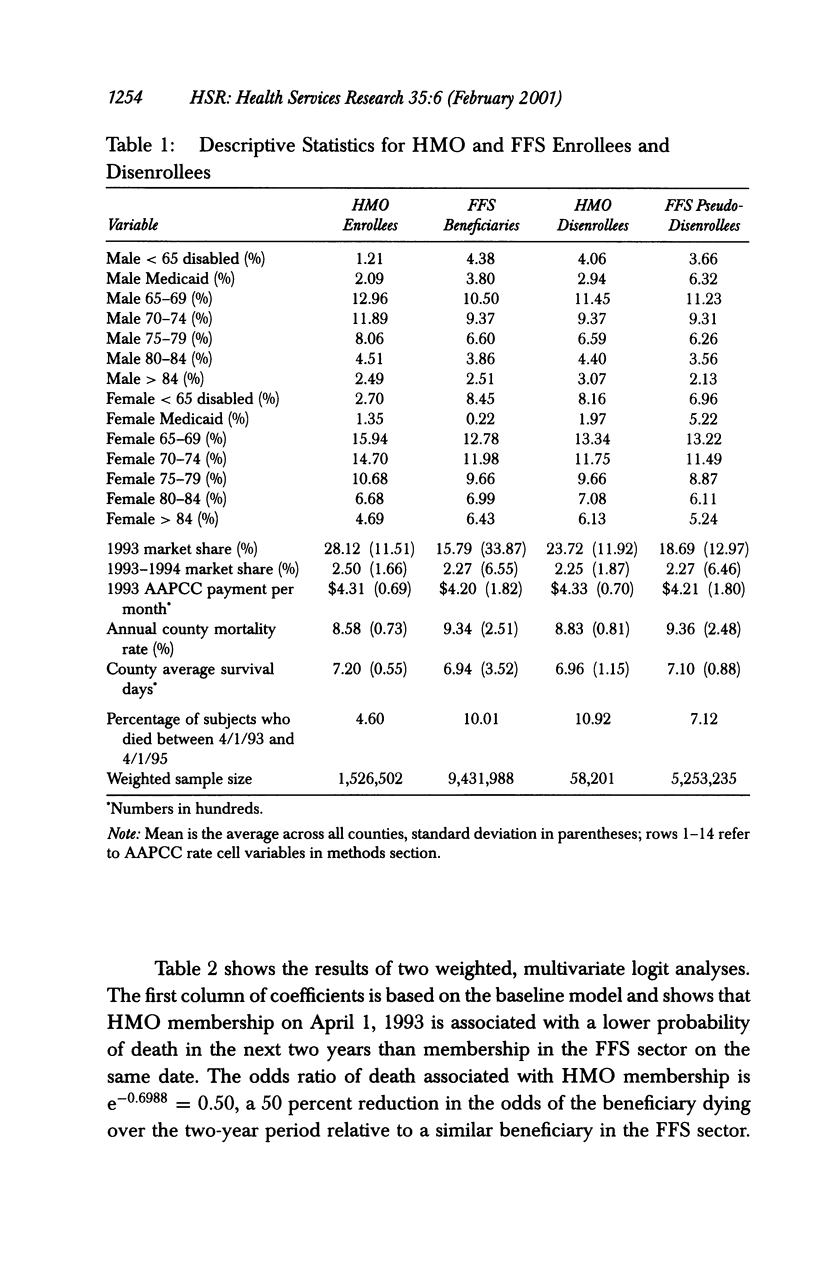

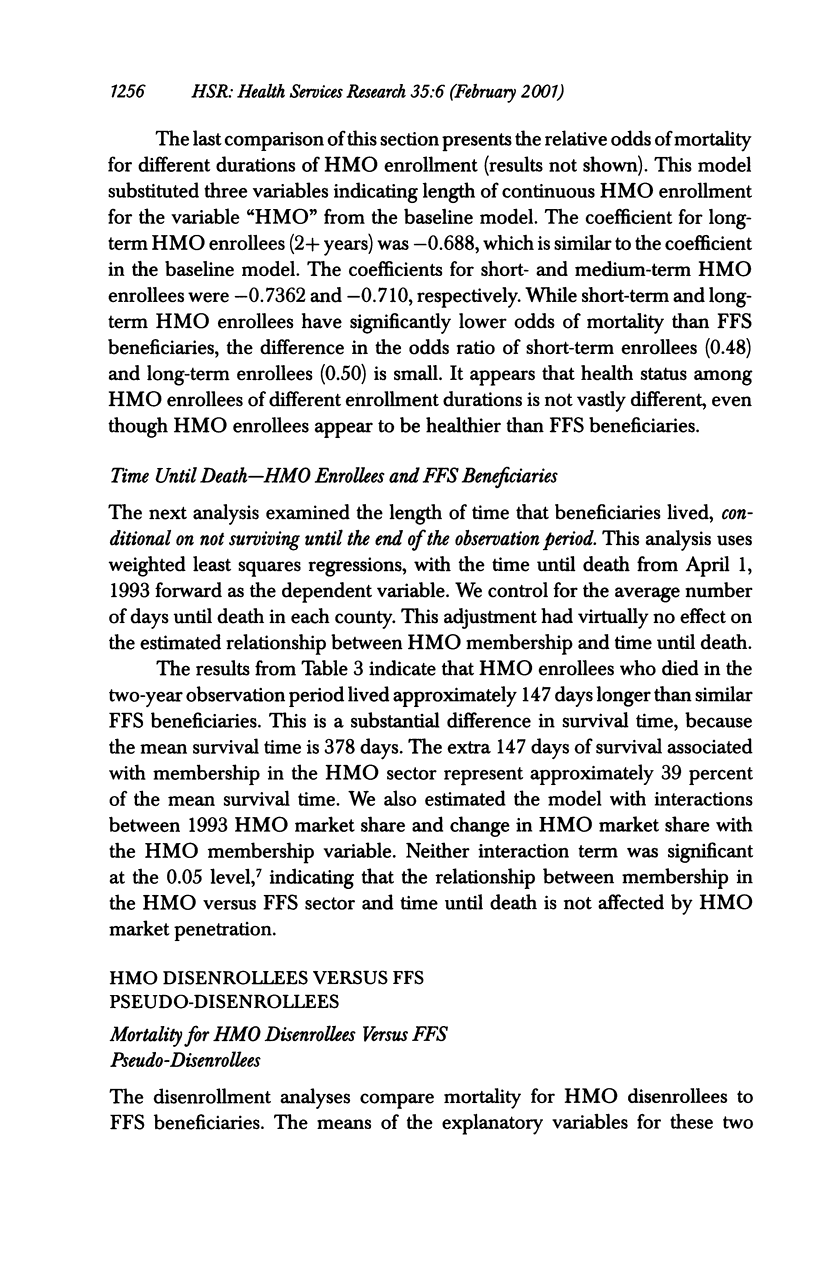

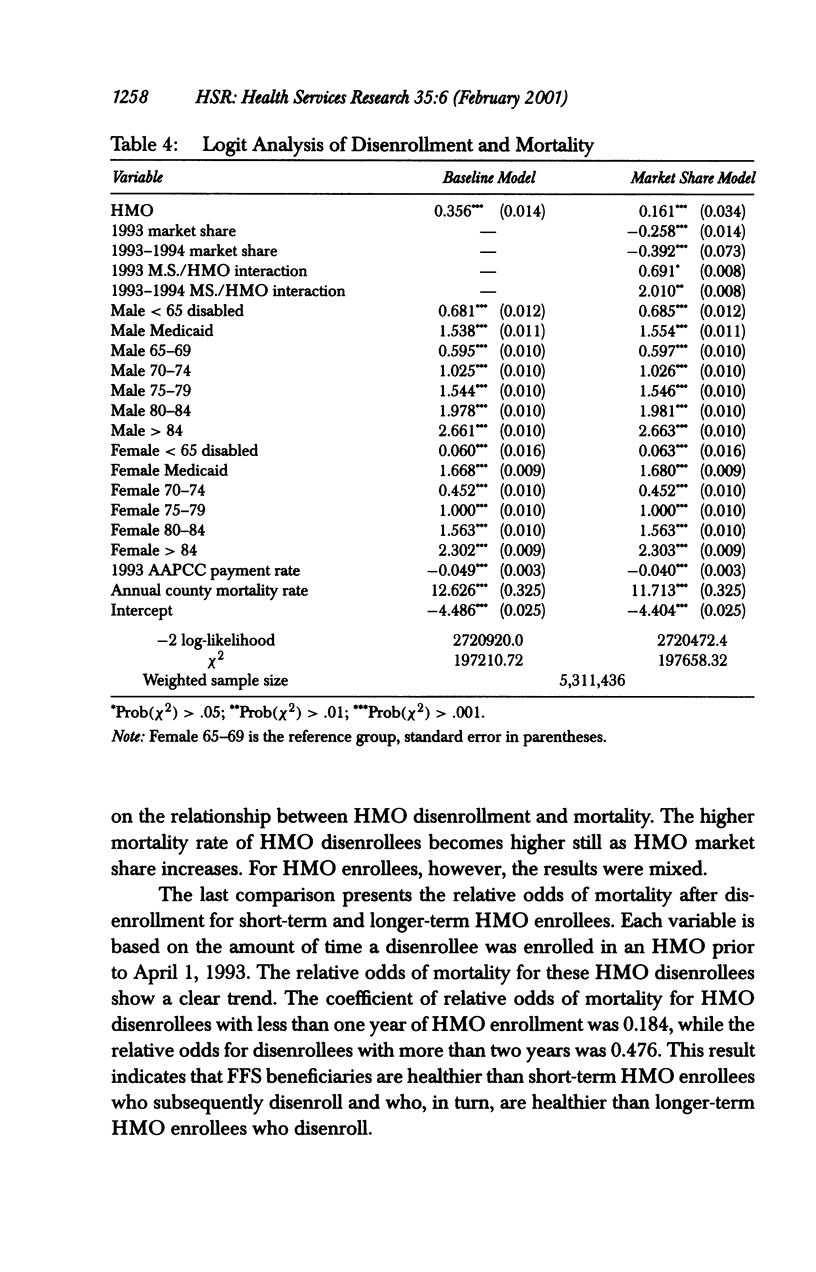

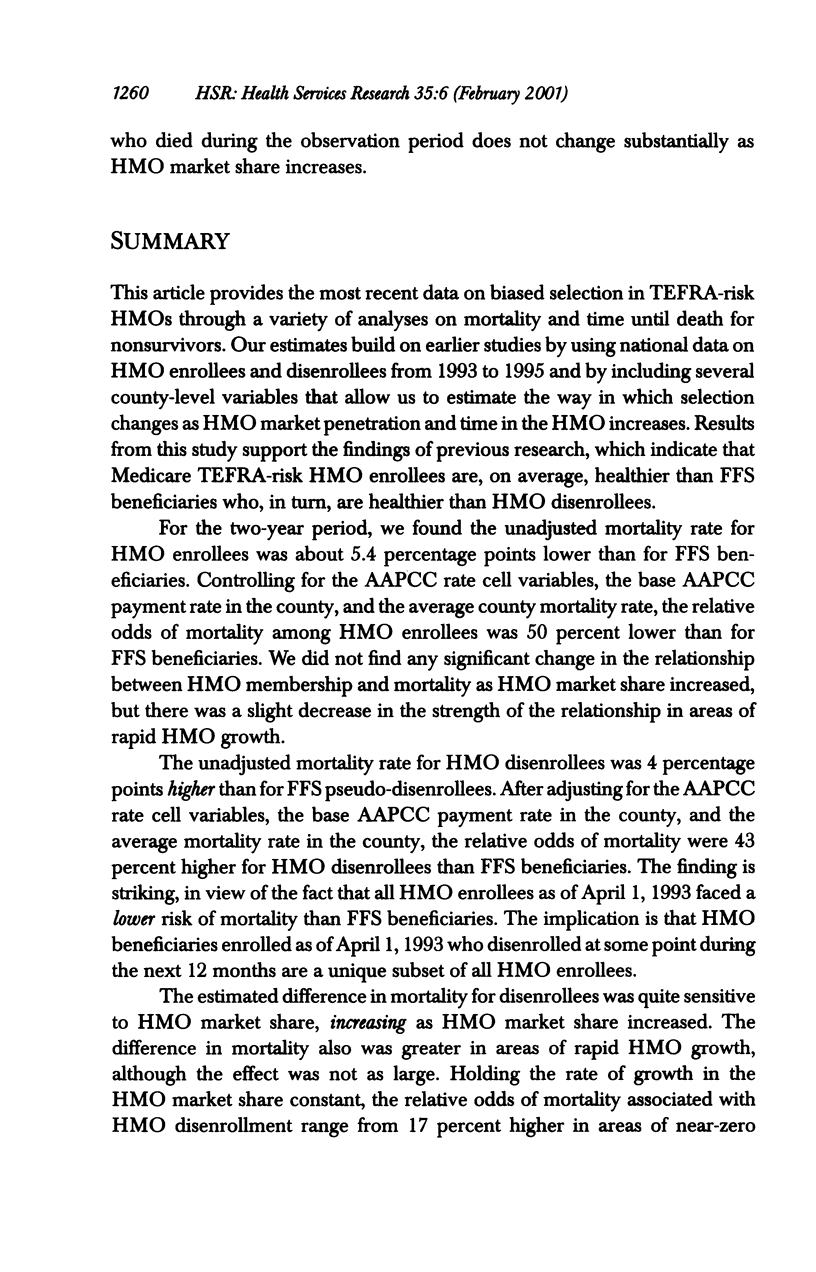

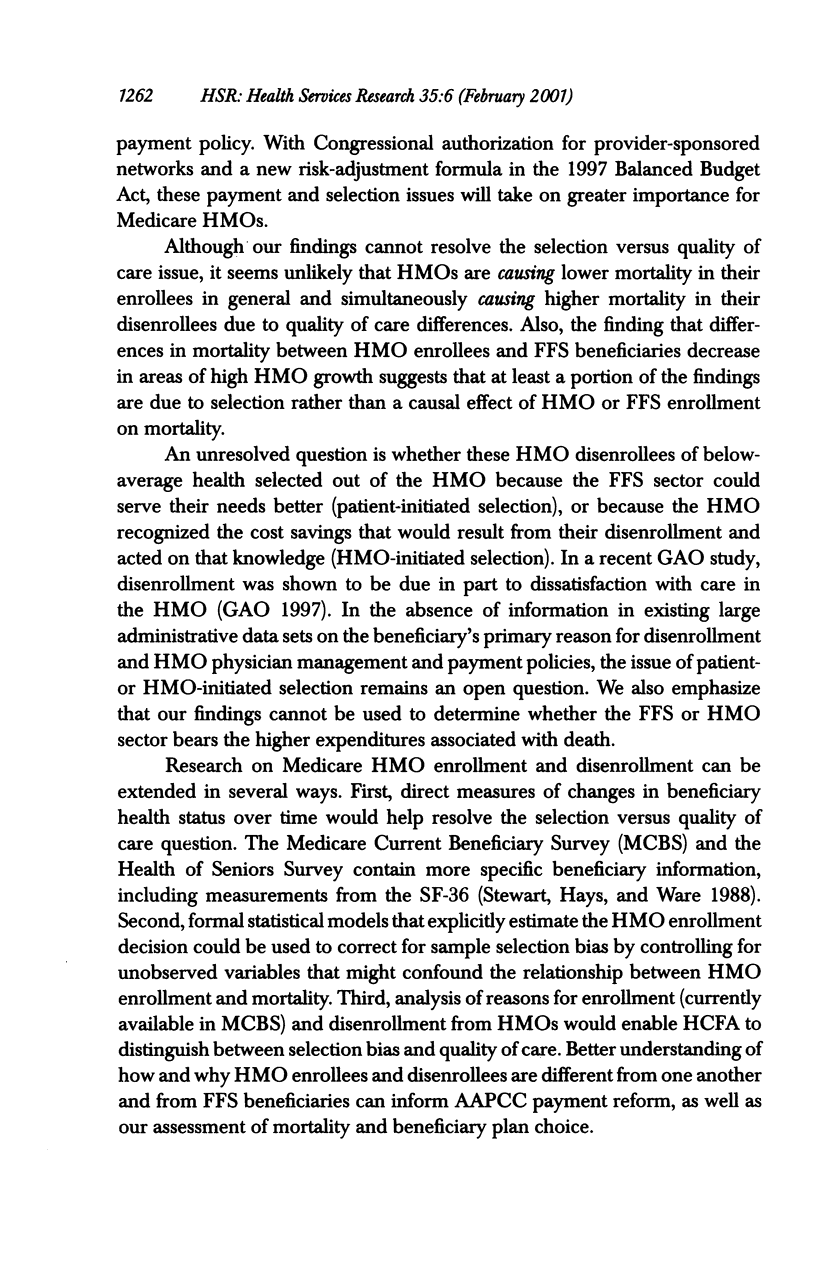

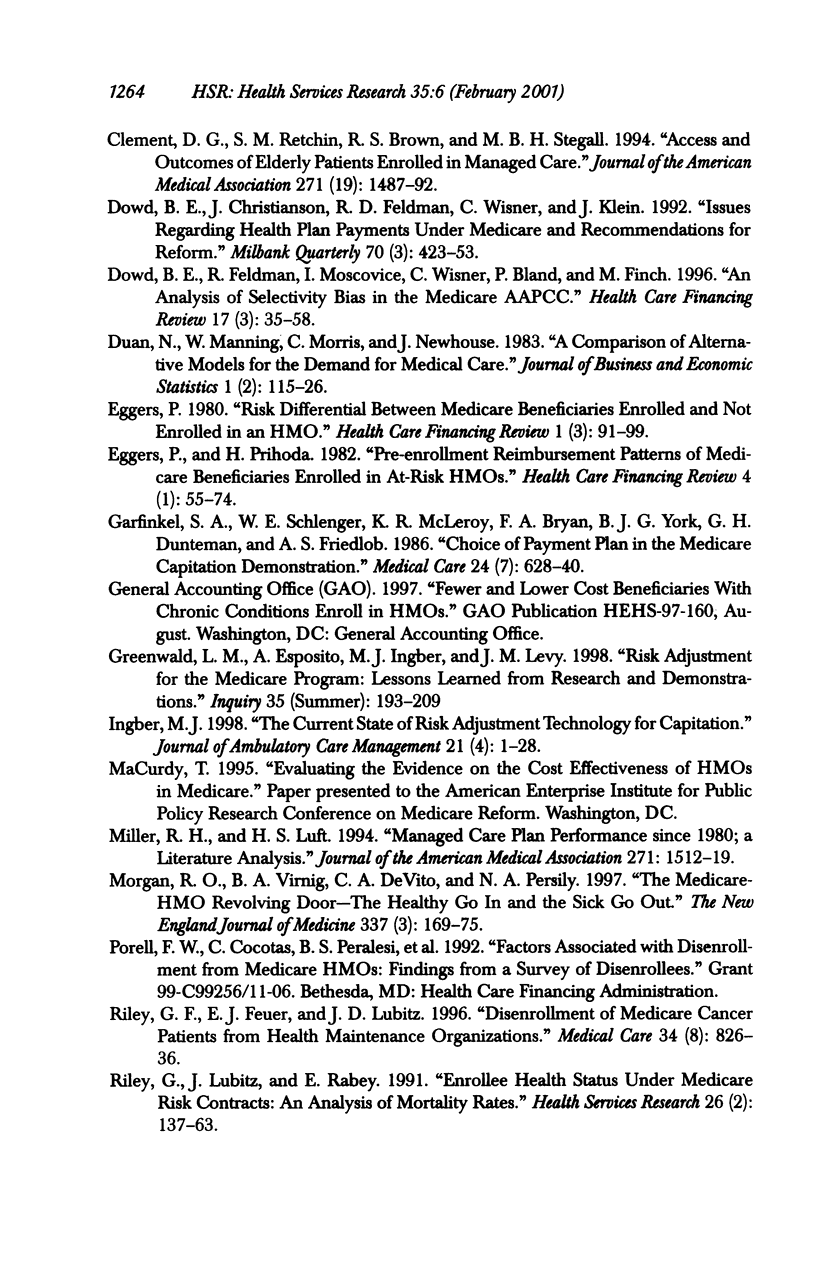
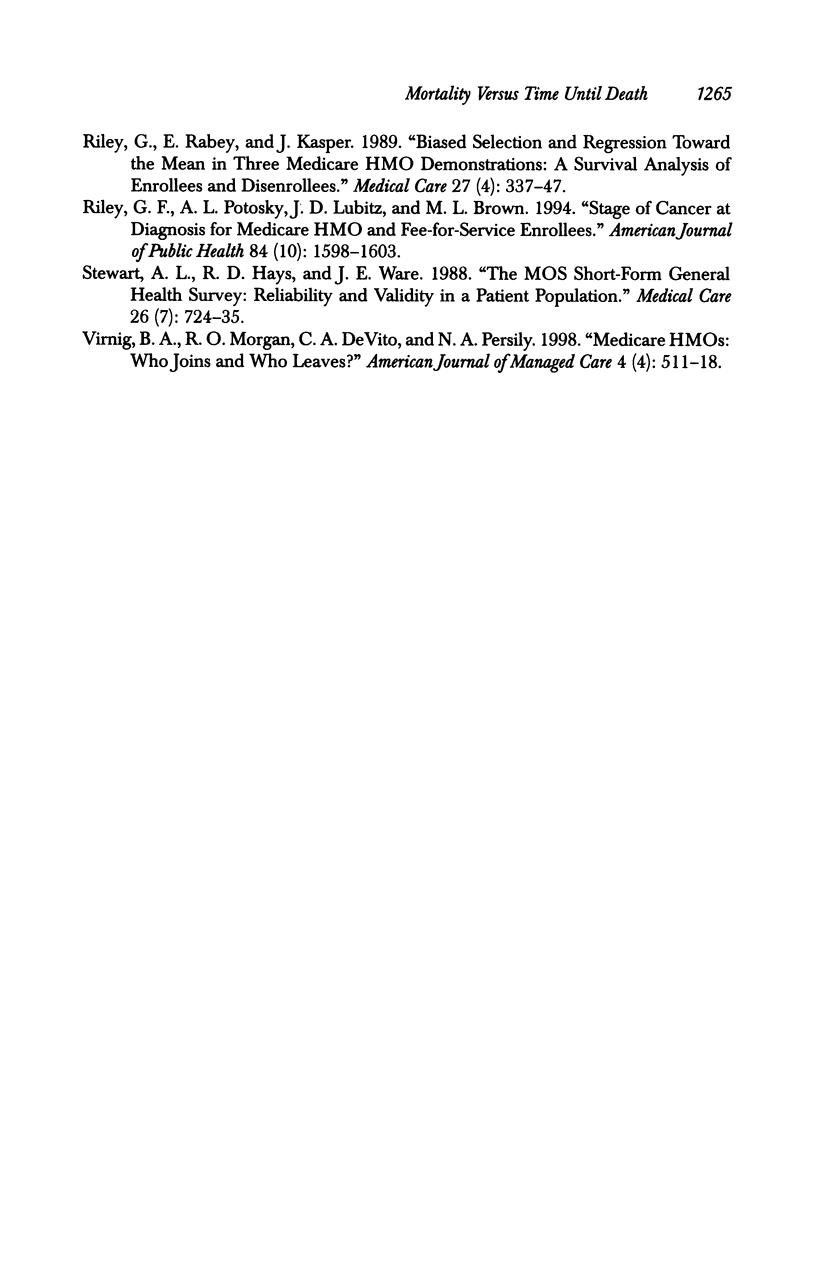
Images in this article
Selected References
These references are in PubMed. This may not be the complete list of references from this article.
- Clement D. G., Retchin S. M., Brown R. S., Stegall M. H. Access and outcomes of elderly patients enrolled in managed care. JAMA. 1994 May 18;271(19):1487–1492. [PubMed] [Google Scholar]
- Dowd B., Christianson J., Feldman R., Wisner C., Klein J. Issues regarding health plan payments under Medicare and recommendations for reform. Milbank Q. 1992;70(3):423–453. [PubMed] [Google Scholar]
- Dowd B., Feldman R., Moscovice I., Wisner C., Bland P., Finch M. An analysis of selectivity bias in the Medicare AAPCC (adjusted average per capita cost). Health Care Financ Rev. 1996 Spring;17(3):35–57. [PMC free article] [PubMed] [Google Scholar]
- Eggers P. W., Prihoda R. Pre-enrollment reimbursement patterns of Medicare beneficiaries enrolled in "at-risk" HMOs. Health Care Financ Rev. 1982 Sep;4(1):55–73. [PMC free article] [PubMed] [Google Scholar]
- Eggers P. Risk differential between Medicare beneficiaries enrolled and not enrolled in an HMO. Health Care Financ Rev. 1980 Winter;1(3):91–99. [PMC free article] [PubMed] [Google Scholar]
- Garfinkel S. A., Schlenger W. E., McLeroy K. R., Bryan F. A., Jr, York B. J., Dunteman G. H., Friedlob A. S. Choice of payment plan in the Medicare capitation demonstration. Med Care. 1986 Jul;24(7):628–640. doi: 10.1097/00005650-198607000-00006. [DOI] [PubMed] [Google Scholar]
- Greenwald L. M., Esposito A., Ingber M. J., Levy J. M. Risk Adjustment for the Medicare program: lessons learned from research and demonstrations. Inquiry. 1998 Summer;35(2):193–209. [PubMed] [Google Scholar]
- Ingber M. J. The current state of risk adjustment technology for capitation. J Ambul Care Manage. 1998 Oct;21(4):1–28. doi: 10.1097/00004479-199810000-00002. [DOI] [PubMed] [Google Scholar]
- Miller R. H., Luft H. S. Managed care plan performance since 1980. A literature analysis. JAMA. 1994 May 18;271(19):1512–1519. [PubMed] [Google Scholar]
- Morgan R. O., Virnig B. A., DeVito C. A., Persily N. A. The Medicare-HMO revolving door--the healthy go in and the sick go out. N Engl J Med. 1997 Jul 17;337(3):169–175. doi: 10.1056/NEJM199707173370306. [DOI] [PubMed] [Google Scholar]
- Riley G. F., Feuer E. J., Lubitz J. D. Disenrollment of Medicare cancer patients from health maintenance organizations. Med Care. 1996 Aug;34(8):826–836. doi: 10.1097/00005650-199608000-00009. [DOI] [PubMed] [Google Scholar]
- Riley G. F., Potosky A. L., Lubitz J. D., Brown M. L. Stage of cancer at diagnosis for Medicare HMO and fee-for-service enrollees. Am J Public Health. 1994 Oct;84(10):1598–1604. doi: 10.2105/ajph.84.10.1598. [DOI] [PMC free article] [PubMed] [Google Scholar]
- Riley G., Lubitz J., Rabey E. Enrollee health status under Medicare risk contracts: an analysis of mortality rates. Health Serv Res. 1991 Jun;26(2):137–163. [PMC free article] [PubMed] [Google Scholar]
- Riley G., Rabey E., Kasper J. Biased selection and regression toward the mean in three Medicare HMO demonstrations: a survival analysis of enrollees and disenrollees. Med Care. 1989 Apr;27(4):337–351. doi: 10.1097/00005650-198904000-00002. [DOI] [PubMed] [Google Scholar]
- Stewart A. L., Hays R. D., Ware J. E., Jr The MOS short-form general health survey. Reliability and validity in a patient population. Med Care. 1988 Jul;26(7):724–735. doi: 10.1097/00005650-198807000-00007. [DOI] [PubMed] [Google Scholar]
- Virnig B. A., Morgan R. O., DeVito C. A., Persily N. A. Medicare HMOs: who joins and who leaves? Am J Manag Care. 1998 Apr;4(4):511–518. [PubMed] [Google Scholar]



